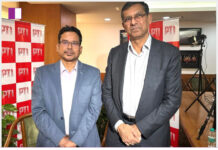The Global Technology Summit serves as a prominent platform that convenes industry experts, policymakers, scientists, and diverse stakeholders worldwide to engage in insightful deliberations on the evolving intersection of technology and geopolitics. In a particular session captured by WION, the focus shifts towards a critical examination of the role of technology.
Here are some of the key highlights:
Private Sector Adoption: Initially, parts of the private sector faced challenges in understanding and adopting the concept of Digital Public Infrastructure (DPI). However, significant buy-in has now occurred, paving the way for discussions on responsible and safe implementation.
Global Campaigns: There are ongoing global campaigns for DPI implementation, with a focus on making the process frictionless and accessible to numerous countries. The discussion revolves around how to promote and disseminate DPI to 50 or 100 countries.
Addressing local needs: A critical aspect discussed is the need to balance the global application of DPI with local considerations. Some countries express a desire for capacity, capability, and job creation, posing a challenge that goes beyond the technical aspects addressed in the paper.
Political and human resource challenges: Political and human resource aspects come into play when countries aim not just to adopt DPI but also to build in-house capabilities and generate jobs. This adds a layer of complexity beyond the technical implementation.
Job Creation: While DPI provides the underlying building blocks, the focus shifts from supply-side job creation to demand-side. Emphasis is placed on building local capacity, fostering innovation, and creating opportunities for startups and solution providers.
Opex vs. Capex model: Contrary to the misconception that DPI must follow an Operational Expenditure (Opex) model, it is clarified that countries can choose to remain in a Capital Expenditure (Capex) model if their procurement preferences align with upfront licensing.
Myths: Addressing prevalent myths, it is emphasized that DPI doesn’t have to be Opex, and it is amenable to various contexts, with approximately 80% of DPI fitting easily into different scenarios.
Standardization and customization: Foundational DPIs can be standardized and packaged, but challenges arise when dealing with sector-specific DPIs. Balancing between a product approach and a service approach becomes crucial, especially when customization is necessary.
Global perspective: The evolving understanding of how to balance standardization and customization is a key consideration.
Economic scale: The concept of in-a-box approach is highlighted, indicating that if a solution can be packaged, it enhances the ability to go global and capitalize on the economics of scale.
Local involvement: The importance of involving the local economy, startup ecosystem, and talent in the DPI implementation process is underscored. Striking a balance between global standards and local customization is a challenge that needs to be navigated.
These key highlights encapsulate the discussions around DPI, covering technical, political, economic, and societal aspects, providing a comprehensive overview of the challenges and opportunities associated with its implementation.



































